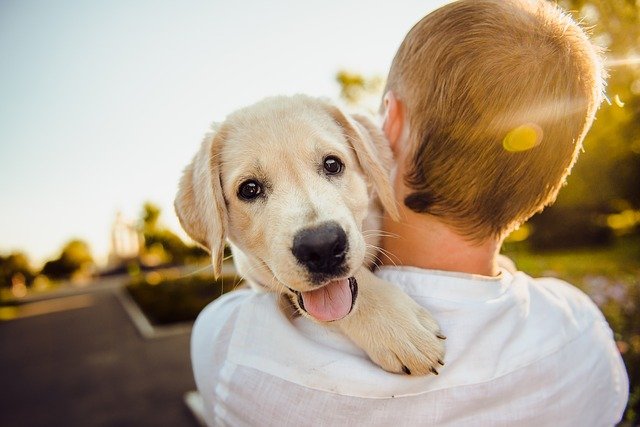Taking care of your pet’s teeth
Image by Helena Sushitskaya from Pixabay
Worried about your pet’s teeth?
We all love our furry friends as much as we do some of our own family members. It’s only natural to want your pets to be in the best state of health they possibly can be. As humans, we brush our teeth everyday (At least, we should!) to avoid a buildup of plaque which can lead to tooth decay and a variety of other dental problems.
Many people neglect to look after their pets’ teeth as they often don’t know how to maintain the dental hygiene of an animal since you can’t exactly get them to hold a toothbrush. In this article, we’re going to explain how to correctly look after a dog’s oral hygiene.
Keeping your dogs’ teeth healthy
Preventing a buildup of plaque is better than paying expensive vet bills for extensive dental treatment. You can buy special dog toothpaste, chews, and other pet oral care supplies.
Dental chews are great for dogs because they’re tasty and help to avoid the buildup of plaque on their teeth. However, dental chews are normally quite high in calories so you need to adjust your dog’s diet to compensate for this. Also, try your best to keep your dog away from hard items like bones and stones so that their teeth don’t wear down as quickly.
Brushing your dogs’ teeth
If possible you want to introduce your dog to get their teeth brushed at as early of an age as possible. Try and make it a rewarding experience by giving your dog treats as you’re slowly getting them introduced to the brushing regimen.
I know you’re wondering how you even begin to introduce the idea of brushing your dog’s teeth to your dog itself. We’ve got a quick, suggestive guide on how to go about introducing your dog to this brushing process. Keep these sessions short and sweet and do it when your dog is in a receptive mood, don’t force your dog to do anything they don’t want to do.
- Gently pull your dog’s cheek backward and forward so that they get used to your hands interacting with that area of their mouth. This should be done for about 3 days before you move onto the next step.
- Put toothpaste on the tip of your finger and let your dog lick it off.
- After your dog begins to like the toothpaste, run your finger along the dog’s gumline.
- As your dog becomes more comfortable with this you should introduce the toothbrush. Let the dog begin licking the toothpaste off of the toothbrush but don’t use the toothbrush in the dog’s mouth just yet.
- Now it is time to start using the toothbrush. Make gentle circular motions on your dog’s front teeth and stop every now and then so the dog can lick the toothpaste on the toothbrush.
- When your dog becomes familiar with you brushing their front teeth you can then start to move onto the dog’s other teeth and stop every now and then to let the dog lick the toothbrush as mentioned earlier.
All smiles!
As you begin doing this daily, it should get easier and easier for you to brush your dog’s teeth. The younger your dog is, the easier it will be and the older your dog is the more time it will take for them to settle into this new routine.
Use this brushing process in conjunction with other oral care supplies and you won’t have to worry about your dog’s teeth ever again! Your dog will be at less risk from oral infections and have a healthier-looking mouth. You’d do anything for your dog’s well-being, wouldn’t you?
David van der Ende is a full-time blogger and part-time graphic design enthusiast. He loves to write about a broad range of topics, but his professional background in both legal and finance drives him to write on these two subjects most frequently.

